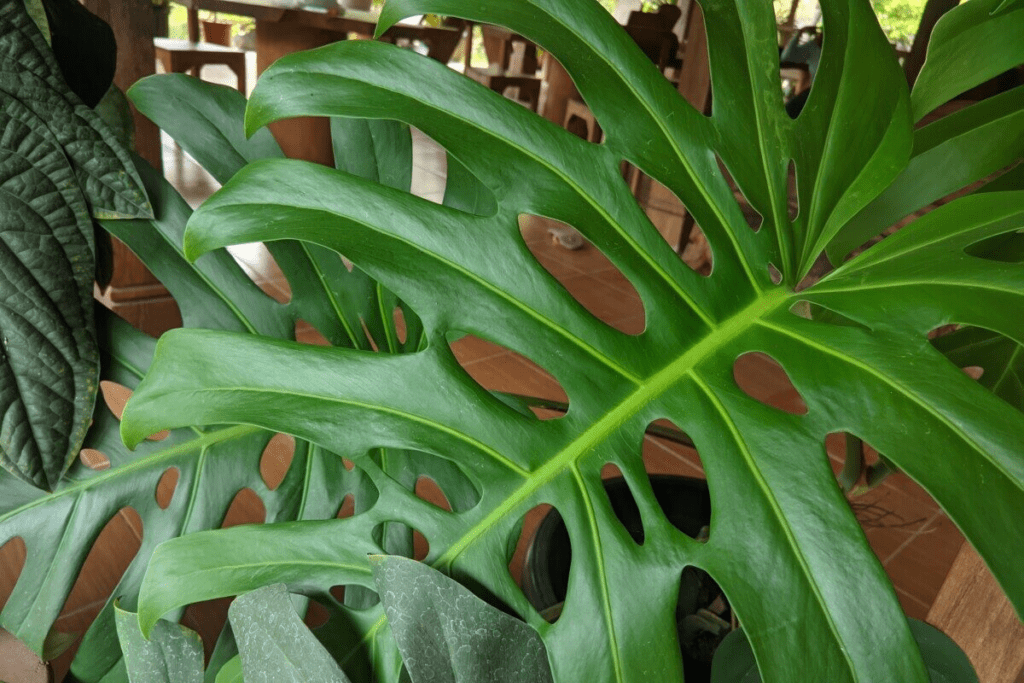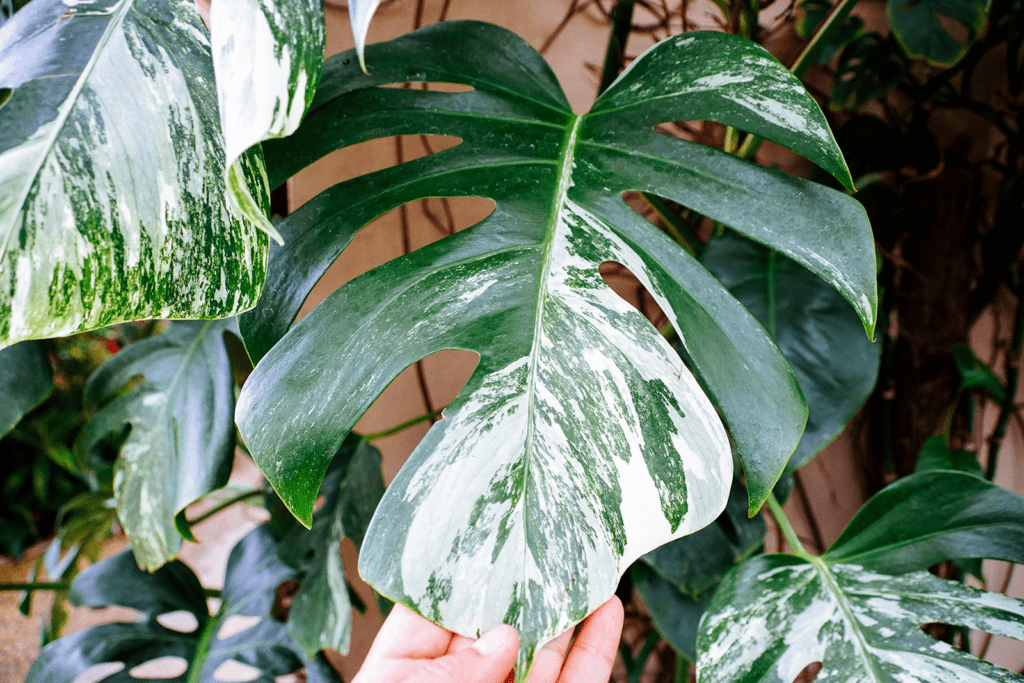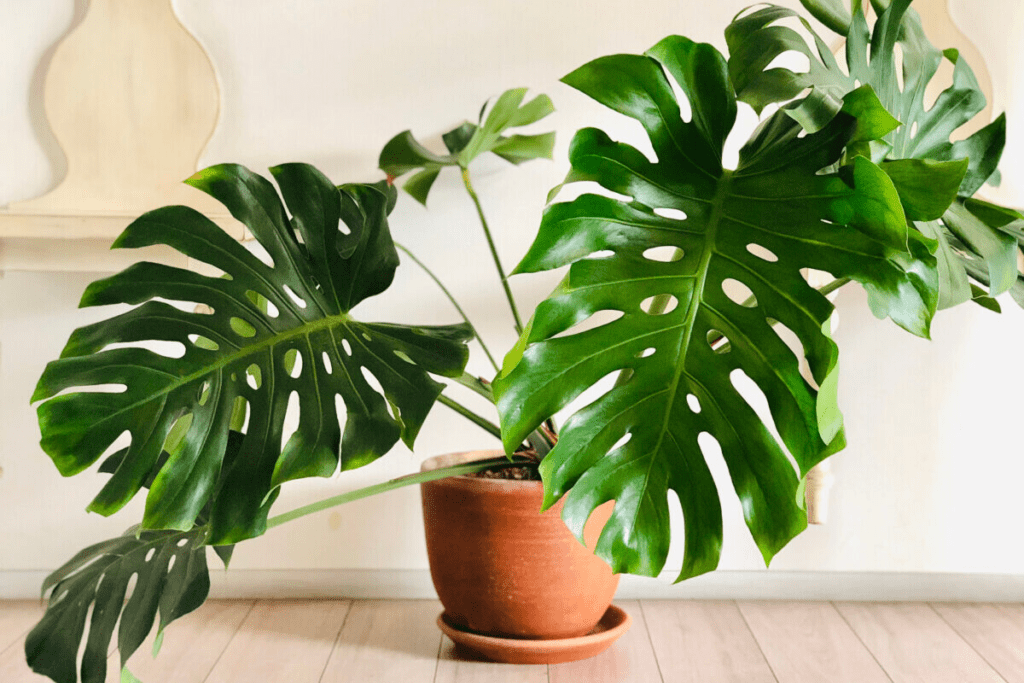Fenestrated Pothos: Why Fenestration Happens and How to Get Them
Growing pothos will be an adorable addition to the garden area but how to get them fenestrated? Hey folks! I am Anna Scott, a Gardener holding 15 years of gardening experience. I am here to help other gardeners to achieve their goals in the gardening field.
Pothos tend to produce elegant heart-structured leaves that look attractive. Its leaves will remain small usually when you grow it as a houseplant. It will not slit or fenestrate if you grow them indoors but it will produce soft edges. Do you know if pothos fenestrates naturally? When the pothos produces slits and hotels in its leaves, then it forms a fenestrated pothos in your home garden.
So, let’s get started to know about why it happens and how to get fenestrated pothos in your home garden.

What Are Fenestrations For?
Before proceeding, it is important to know about the fenestrations. There are various scientific reasons behind the foliage fenestration.
The main reason is the wind that moves the large leaves without harming them. Another reason for the fenestration is the holes that cool down the leaves and capture more sunlight.
The holes in the foliage let the rainwater move all along the leaves to reach the soil at the ground, whereas pothos grow thickly on tree trunks.
Last, but not least whatever there are reasons behind the fenestrations, they are being valued and loved by the planters, which needs to be encouraged, especially in the pothos.
How Can I Get My Pothos To Fenestrate?
Pothos need to climb if you want to get them to fenestrate where they will begin to produce splits and holes in their leaves. Potted pothos will grow down in their stage because their leaves can not be fenestrated.
Pothos will become mature if they can climb. One of the best ways to get the pothos to fenestrate is to support them. Moss poles will help in providing support to the pothos.
Moss Poles
Usually, the pothos like to use the aerial roots to absorb water and gain nutrients to grow from the support you are providing them to climb.

For the pothos, either use a commercial moss pole or make one with the sphagnum moss (Note: Peat moss needs to be avoided).
If you are looking to make your moss pole, then you can do so. It can be done by moistening the sphagnum moss, and then fluffing it up. Then lay it along the length of wire mesh. After that, roll up the mesh in a tube. It is important to secure them with cable ties.
Last but not least, push the moss pole into the soil mix by gently attaching its stems(by loosening it) and aerial roots to the pole with the help of twine.
How to Get Fenestrated Pothos?
There are more chances to increase the fenestrated pothos. It will help in the mature growth of the plant. If the plant receives optimal climatic conditions for its growth, then it is easy to get fenestrated pothos in your home garden.
So, the climatic conditions that help in the fenestrations in the pothos are as follows:
Light
- Pothos require filtered or indirect sunlight for their growth. so choose a location where it can receive this type of sunlight.
- Also, low sunlight will not be good for its growth. During summers, place the plant is in a shady location.
- Keep the plant under the tree or the covered porch so that the direct sunlight cannot harm its leaves.

Temperature and Humidity
- The ideal range of temperature for this plant lies between 65 to 75°F.
- Plant can die If the temperature goes above 90°F so handle the temperature as per the plant.
- Also, during autumn when the temperature begins to fall, bring the plant inside when the temperature goes below 50°F.
- This plant is in love with high humidity, but the household humidity will not be suitable for the plant, especially during winter.
- So raise the level of humidity in the plant by making use of a pebble tray and keep it under the pot, filling it with water so that the plant remains moist.
- Mist the plant so that the plant remains moist or invest in a small humidifier and keep the plants together to increase the humidity.
Soil
- This plant requires a good amount of well-drained soil to prosper.
- Feed the plant with loose soil that is filled with peat moss, perlite, or orchid bark.
- A good potting mix will help the plant to grow fine, it is because adding more amendments to the soil increases the nutrition content in the plant.
- Choose a pot that has at least one drainage hole so that the soil does not remain waterlogged for long.
Water
- Pothos require water when its soil becomes dry about 1-2 inches from its top.
- The requirement of the water depends on the soil moisture, if the soil is dry about 1-2 inches, then is the right time to water the plant.
- Water the plant until the water flows out from the drainage holes. Remove the excess water from the saucer after that to prevent waterlogged soil.
- Outside pothos require more water as compared to indoor pothos. During winters, if the heat is more on the indoor pothos, then the soil will dry faster, so water the plant immediately.

Fertilizer
- Fertilizer is required by every plant, the same is the case with this plant to encourage fenestrated pothos.
- Make use of liquid fertilizer, dilute to its half strength to avoid overfertilization, and add it to the soil Mix every three weeks.
- Fertilize the plant during spring summer and early autumn, when the plant grows actively in its season.
- Also, adding slow-release granules to the mix will help in providing extra nutrients to the soil.
Pruning
- Pruning is required to maintain a healthy shape and size in the plant.
- Pothos will encourage more growth if Pothos is being pruned on time.
- Cut off the stems in between the nodes as it will stimulate the new growth in the plant.
- Remove all the dead and diseased stems and leaves from the plant to stop it from spreading to the whole plant.
- Make use of sharp, clean, and sterilized scissors to prevent infection in the plant.
Pests and Diseases
- This plant is pest-free or disease free but it may lead to some bacterial diseases. If you do not care for the plant properly.
- Some bugs like spider mites, aphids, and mealybugs tend to attack the plant to suck its fluid and satisfy their hunger.
- So, prevent them by either hand-picking them or spraying them with water.
Propagation
As mentioned propagation of pothos can be done easily, so let us know the procedure of doing so. After growing the pothos in your garden, you can take advantage of the most flavorful plant. Follow the below steps:
Step 1- Firstly, you are required to cut the stem of pothos leaves from the existing plant (3 inches).
Step 2- Now, attach that stem (cutting) to any glass of water.
Step 3- Choose the place where your cutting will receive indirect sunlight. Place them there.

Step 4- Check if roots are coming from or not, you have to change the water every day so that no disease can take place.
Step 5- When you see the roots are coming, this will take a few weeks.
Step 6- Then you have to put the cutting in the soil.
Step 7- Last but not least, take proper care of them so that they grow at their best and give you the desired outcome. Water them regularly unless they get fully matured.
This is how you are done with the process of growing the pothos from cuttings. But maintain them properly.
Summing up the Context
In this guide, you come to know that Pothos tend to produce elegant heart-structured leaves that look attractive. Its leaves will remain small usually when you grow it as a houseplant. It will not slit or fenestrate if you grow them indoors but it will produce soft edges. Do you know if pothos fenestrates naturally?
When the ppthos produce slits and hotels in its leaves, then it forms a fenestrated pothos in your home garden. Read the whole guide so that you come to know how to get the fenestrated pothos in yoru garden areas. I will come back with another informative guide for you all soon. Till then safe gardening.
Thanks for reading! Happy Gardening!
FAQs
Where do most fenestrated plants originate from?
They originate from Mexico and other places that contain bad storms such as hurricanes.
Do golden pothos get Fenestrations?
Yes, the golden pothos will get fenestrations. This variety grows about 12-18 inches long every month if you provide good climatic conditions to the plant. Its leaves will become mature and attain a height of about 20 to 40 feet long.


